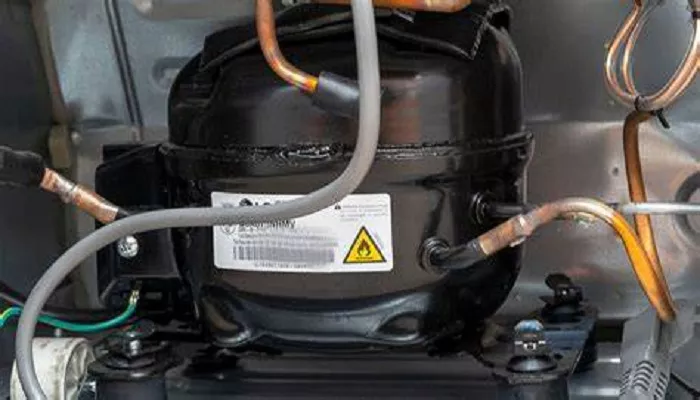The compressor is the heart of a refrigerator, responsible for circulating refrigerant and maintaining the cooling cycle. Different types of compressors are used in refrigerators, each with unique mechanisms, advantages, and applications. This article provides a detailed, professional analysis of refrigerator compressors, covering their working principles, classifications, efficiency, and industry trends.
Basic Function of a Refrigerator Compressor
- Compression: Converts low-pressure gas into high-pressure gas.
- Circulation: Moves refrigerant through the condenser, expansion valve, and evaporator.
- Heat Exchange: Facilitates heat absorption and release to cool the refrigerator.
Without a functioning compressor, the refrigerant cannot circulate, and cooling stops.
Types of Compressors in Refrigerators
Reciprocating (Piston) Compressor
Working Principle
- Uses a piston-cylinder mechanism.
- The piston moves up and down, compressing refrigerant gas.
- A suction valve draws in refrigerant, and a discharge valve releases high-pressure gas.
Advantages
- Simple and robust design.
- Cost-effective for small to medium refrigerators.
- High efficiency at full load.
Disadvantages
- Noisy due to mechanical movement.
- Higher wear and tear compared to rotary compressors.
- Less efficient at partial loads.
Applications
- Common in older and budget-friendly refrigerators.
Rotary Compressor
Working Principle
- Uses a rotating vane or roller inside a cylinder.
- The rotation creates suction and compression without reciprocating motion.
Types
- Rotary Vane Compressor: Uses sliding vanes for compression.
- Rolling Piston Compressor: Uses an eccentric roller for compression.
Advantages
- Quieter than reciprocating compressors.
- Fewer moving parts, reducing wear.
- More energy-efficient at partial loads.
Disadvantages
- Higher manufacturing cost.
- Less suitable for very high-capacity cooling.
Applications
- Common in mid-range to high-end refrigerators.
Scroll Compressor
Working Principle
- Uses two spiral-shaped scrolls (one fixed, one orbiting).
- The orbiting scroll traps and compresses refrigerant gas.
Advantages
- Extremely quiet operation.
- High energy efficiency.
- Fewer moving parts, leading to longer lifespan.
Disadvantages
- Expensive to manufacture and repair.
- Not commonly used in standard household refrigerators.
Applications
- Mostly found in premium and commercial refrigeration systems.
Inverter Compressor
Working Principle
- Uses variable-speed technology (DC motor).
- Adjusts compressor speed based on cooling demand.
Advantages
- Energy-efficient (reduces power consumption by 20-40%).
- Quieter operation due to reduced mechanical stress.
- Longer lifespan due to fewer start-stop cycles.
Disadvantages
- Higher initial cost.
- Complex electronics may require specialized repairs.
Applications
- Modern high-efficiency refrigerators (e.g., LG Linear Inverter, Panasonic Econavi).
Comparison of Compressor Types
| Feature | Reciprocating | Rotary | Scroll | Inverter |
|---|---|---|---|---|
| Noise Level | High | Medium | Low | Very Low |
| Efficiency | Moderate | High | Very High | Highest |
| Cost | Low | Medium | High | High |
| Durability | Moderate | High | Very High | High |
| Applications | Budget fridges | Mid-range | Premium/Commercial | High-end |
Factors Influencing Compressor Selection
Energy Efficiency
- Inverter compressors save energy by adjusting speed.
- Scroll compressors offer high efficiency but at a higher cost.
Noise Levels
- Scroll and inverter compressors are the quietest.
- Reciprocating compressors are noisier.
Cooling Capacity
- Large refrigerators may use rotary or scroll compressors.
- Smaller units often use reciprocating compressors.
Cost Considerations
- Budget models use reciprocating compressors.
- Premium models use inverter or scroll compressors.
Industry Trends in Refrigerator Compressors
- Shift to Inverter Technology: Due to energy-saving regulations (e.g., ENERGY STAR ratings).
- Smart Compressors: IoT-enabled compressors with adaptive cooling.
- Eco-Friendly Refrigerants: Compressors optimized for R600a (isobutane) instead of R134a.
Maintenance and Troubleshooting
Common Compressor Issues
- Failure to Start: Electrical faults, capacitor issues.
- Overheating: Poor ventilation, refrigerant leaks.
- Excessive Noise: Worn-out bearings, loose components.
Preventive Measures
- Ensure proper ventilation around the refrigerator.
- Clean condenser coils regularly.
- Avoid overloading the fridge.
Conclusion
Refrigerator compressors vary in design, efficiency, and cost. While reciprocating compressors are common in budget models, inverter and scroll compressors dominate high-efficiency refrigerators. Understanding these differences helps in selecting the right refrigerator for long-term performance and energy savings.

